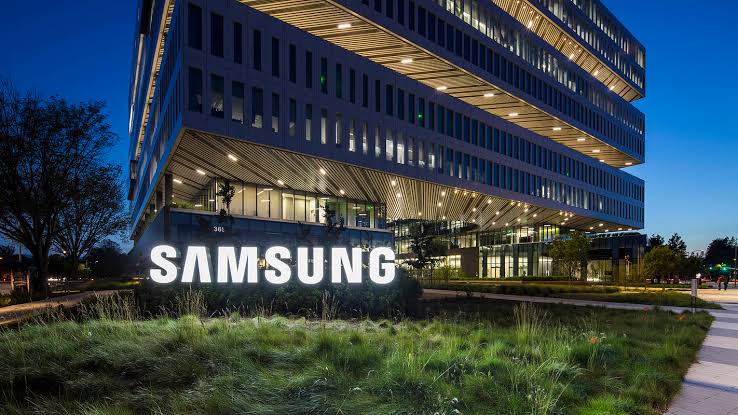Samsung Electronics, one of the world’s most dominant tech giants, has stunned global markets by announcing a massive 56% year-over-year drop in operating profit for the second quarter of 2025. Despite hopes of a recovery driven by artificial intelligence (AI) chip production and demand, the company’s performance has fallen well below investor expectations.
This unexpected dip highlights Samsung’s struggle to navigate the post-pandemic tech landscape and raises critical questions about the timing and impact of its strategic investments in high-bandwidth memory (HBM) and AI-related technologies.
A Closer Look at the Financials
In its earnings guidance released on July 7, 2025, Samsung estimated that its operating profit for Q2 stood at 6.6 trillion won (approximately $4.76 billion), down from 14.6 trillion won a year ago — a sharp 56.2% decline. This figure also missed analysts’ forecasts, disappointing investors who had expected a stronger rebound, especially in the lucrative memory chip sector.
Samsung’s revenue for the quarter was reported at 74 trillion won, marking a 4.2% increase from the same period in 2024. However, the modest gain in revenue was not enough to offset the erosion in profitability.
Memory Chip Business Still in Recovery Mode
The biggest drag on Samsung’s profit remains its memory chip division — once the crown jewel of the company’s global operations. Despite an uptick in demand for AI-optimized chips like HBM (High Bandwidth Memory), the core memory market is still reeling from oversupply, price volatility, and a delayed global recovery in consumer electronics.
Although Samsung began ramping up production of HBM3 chips — designed for high-performance AI workloads — it has yet to catch up with market leader SK Hynix in terms of supplying NVIDIA and other major AI players. As a result, Samsung has not been able to fully capitalize on the AI boom that’s reshaping the semiconductor industry.
AI Growth Isn’t Offsetting Broader Weakness
Analysts had hoped Samsung’s investments in AI chips would spark a financial turnaround by mid-2025. However, that shift is proving slower than expected. While demand for AI chips is growing globally, especially from cloud providers and tech giants like Google, Amazon, and Microsoft, Samsung is still in the early phase of client acquisition and production optimization.
Moreover, with global smartphone shipments stagnating and demand for consumer electronics showing sluggish growth, Samsung’s traditional revenue streams — mobile phones and home appliances — are underperforming.
Competitive Pressure and Market Share Dynamics
Another growing concern is increased competition in both the chip and smartphone sectors. In the AI chip race, SK Hynix and Micron have taken early leads in delivering next-generation memory solutions. On the smartphone front, Chinese rivals like Xiaomi, Oppo, and Huawei have regained momentum in key Asian and European markets, further squeezing Samsung’s market share.
In addition, Apple continues to dominate the premium smartphone category globally, limiting Samsung’s ability to generate higher-margin revenue from flagship devices.
Investor Sentiment and Market Reaction
The market reacted cautiously to Samsung’s Q2 report. Although the company’s stock remains relatively stable, there’s growing anxiety among investors about whether Samsung can effectively transform itself into a major AI hardware supplier while maintaining its legacy businesses.
The 56% decline in operating profit is being viewed as a warning sign, not just for Samsung but for the broader tech manufacturing ecosystem that relies heavily on cyclical demand.
Strategic Moves and Future Outlook
Despite the current financial setback, Samsung is doubling down on its AI ambitions. The company recently announced multi-billion-dollar investments in advanced chip fabrication, AI R&D labs, and new partnerships with global tech firms.
Samsung is also expanding its HBM capacity to challenge SK Hynix and position itself as a key supplier for NVIDIA, AMD, and emerging AI startups. However, these strategic shifts may take 2–4 quarters to show meaningful financial returns.
Industry experts believe that 2026 will be the true test year for Samsung’s AI transformation. Until then, the company must navigate a highly competitive landscape, cope with global economic uncertainty, and execute its roadmap with precision.
Conclusion
Samsung’s Q2 2025 earnings reveal a company caught in a complex transition. As it moves from traditional tech dominance toward becoming an AI infrastructure powerhouse, short-term pain seems inevitable. The 56% drop in operating profit is a stark reminder that even the biggest players are vulnerable when innovation outpaces execution.
For Samsung, the message is clear: the future belongs to those who adapt quickly — and deliver results. Whether it can bounce back in the next few quarters will define its relevance in the AI era.

